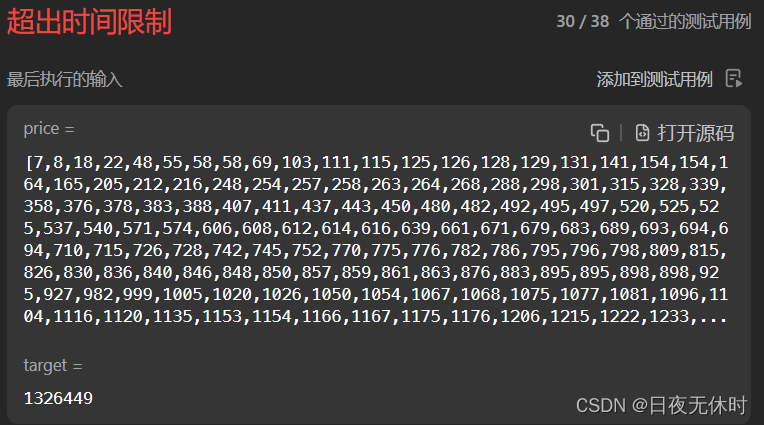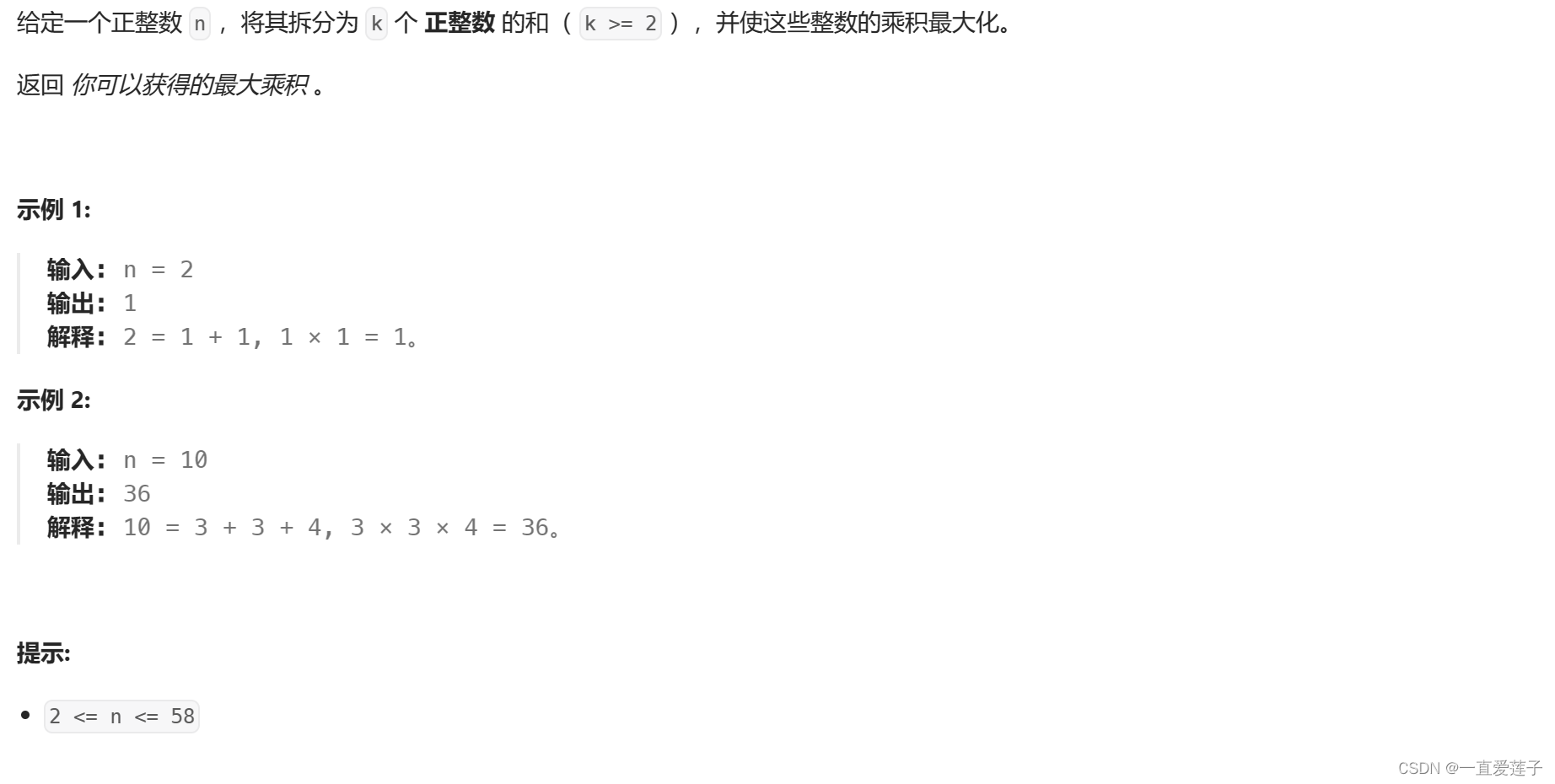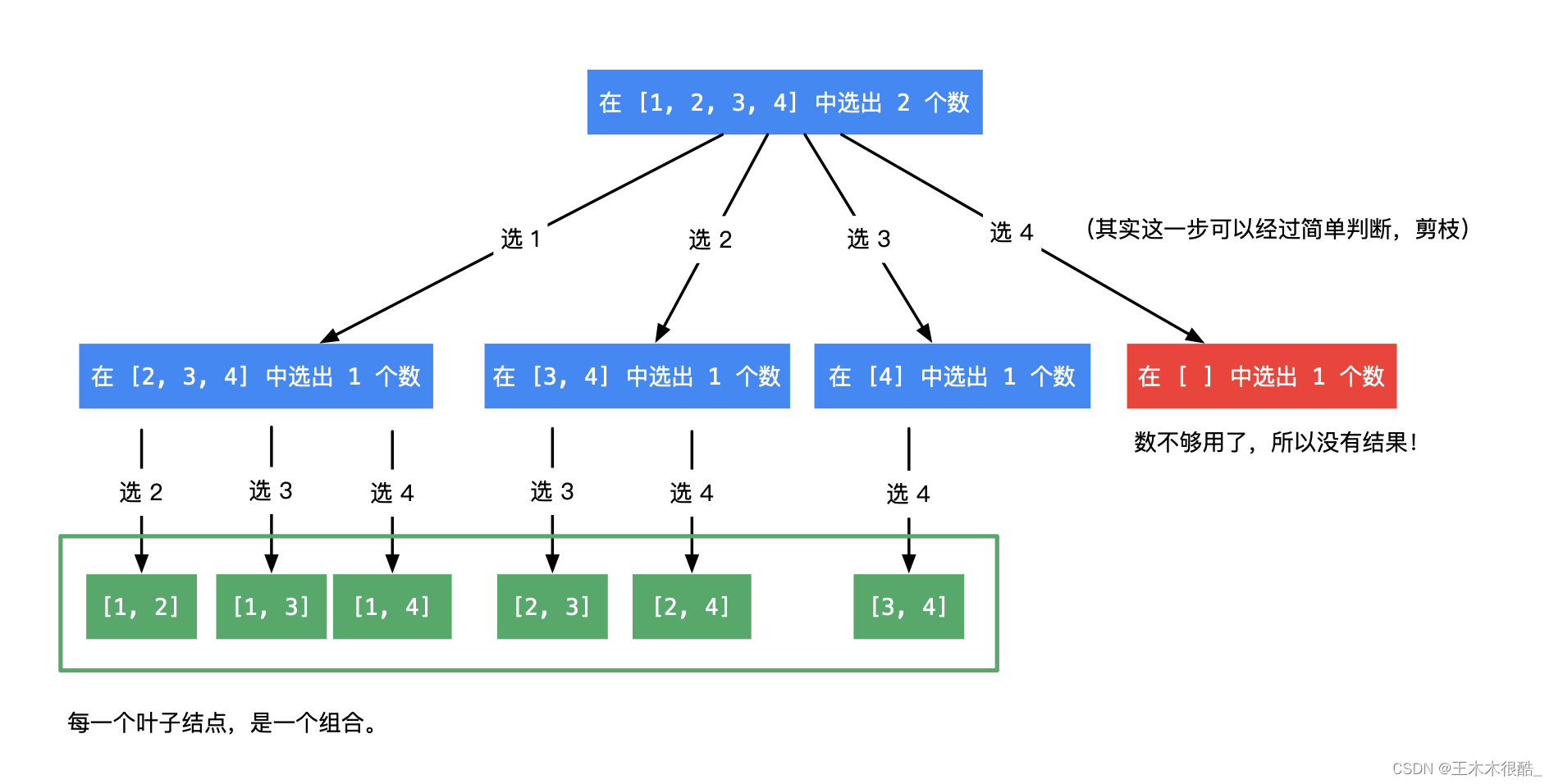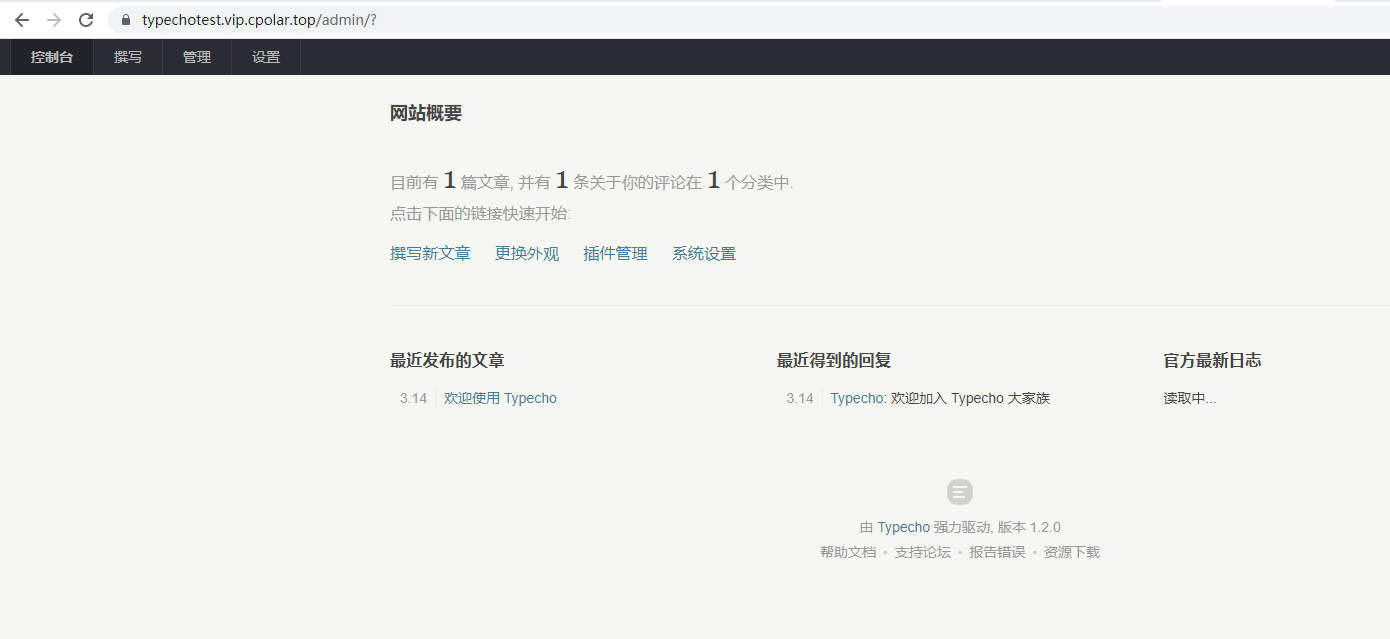文章目录
- 子查询
- IN运算符
- 子查询 VS 连接
- ALL关键字
- ANY关键字
- 相关子查询 !
- EXISTS运算符
- select子句中的子查询
- from子句中的子查询
子查询
- 获取价格大于id为3的货物的商品
- 用到了内查询,获取id为3的商品的单价,把结构传给外查询
- 在where子句中编写子查询,也可以在from或select子句中编写。
use sql_store;
select *
from products
where unit_price > (select unit_pricefrom productswhere product_id = 3)
运行结果:

- 练习:查询工资大于平均工资的员工
use sql_hr;
select *
from employees
where salary > (select avg(salary)from employees)
运行结果:
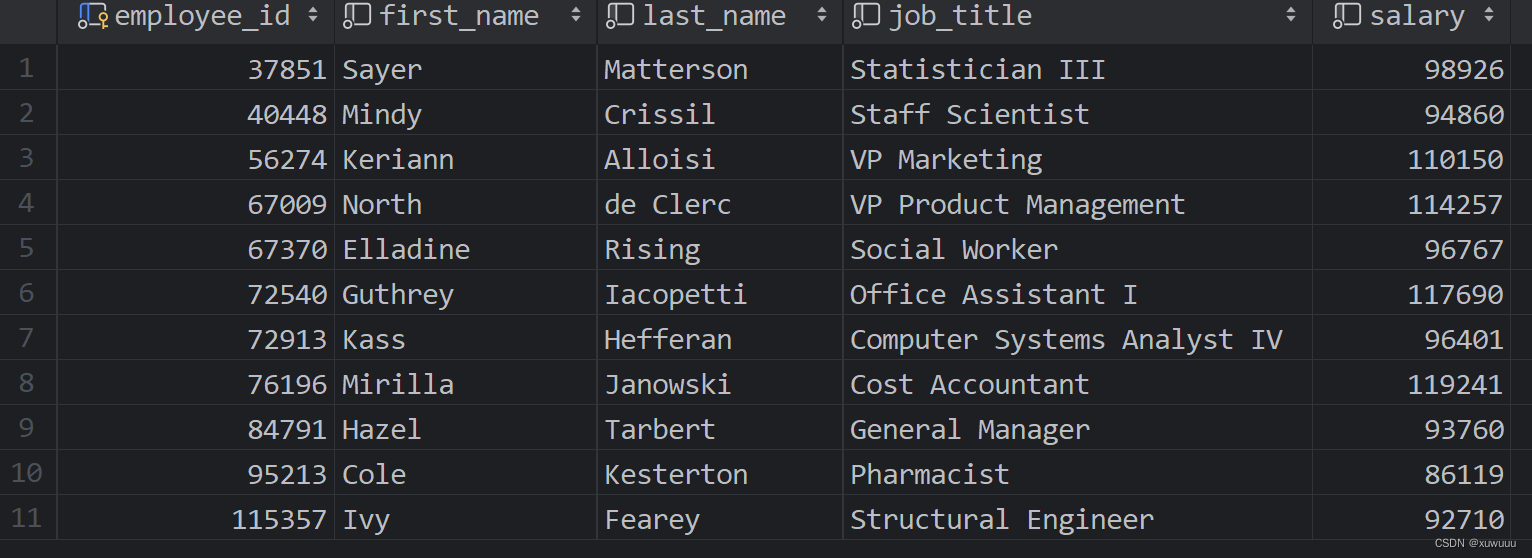
IN运算符
- in运算符写子查询
- 查询没有被订购过的商品,先在子查询中找出被订购过的商品id(注意要去重)。将这个查询结果作为子查询,在外层找product_id不在子查询结果里的数据,就是没有被订购过的商品。
use sql_store;
select *
from products
where product_id not in (select distinct product_idfrom order_items
)

- 练习:找到没有支付过支票的客户
- 从invoices中查询去重后的clientid,将这个结果作为内查询传给外查询,找不在这个内查询结果中的id,就是没有支付过支票的顾客
use sql_invoicing;
select *
from clients
where client_id not in (select distinct client_idfrom invoices
)
运行结果:

子查询 VS 连接
- 在运行时间差不多的情况下,应该选择最易读的查询,要注意代码的可读性!
- 上一个练习题,可以使用外连接进行查询,但这样写可读性不好。
select *
from clients
left join invoices using (client_id)
where invoice_id is null
- 练习
- 找到订购了货物id为3的顾客
- 这道题用 连接查询 思路更清晰,可读性更好
-- 用子查询写
use sql_store;
select customer_id, first_name, last_name
from customers
where customer_id in (select customer_idfrom order_itemsjoin orders using (order_id)where product_id = 3
)-- 使用连接查询
select distinct customer_id, first_name, last_name
from customers
join orders using (customer_id)
join order_items using (order_id)
where product_id = 3
ALL关键字
- 查询大于3号客户的最大发票的所有数据
use sql_invoicing;
select *
from invoices
where invoice_total > (select max(invoice_total)from invoiceswhere client_id = 3)
- 用all关键字
- 查询invoice_total比all后查询到的所有数据都大的数据,一个一个的跟all后查询到的结果进行比较
select *
from invoices
where invoice_total > all(select invoice_totalfrom invoiceswhere client_id = 3)
返回结果

- max写法和all写法可以相互改写,两种写法的可读性都较好
ANY关键字
- in 和 = any是等价的。
- 查询至少有两张发票的客户id
- 使用count(*)查到所有的信息,根据client_id分组,分组后用having进行条件筛选
select client_id, count(*)
from invoices
group by client_id
having count(*) >= 2
- 把上述查询当子查询,把clients中至少有两张发票的客户信息查出来
- where子句中可以用in,也可以用 = any
- in 和 = any的效果是一样的,用哪种都行
-- in
select *
from clients
where client_id in (select client_idfrom invoicesgroup by client_idhaving count(*) >= 2
)
-- = any
select *
from clients
where client_id = any (select client_idfrom invoicesgroup by client_idhaving count(*) >= 2
)
相关子查询 !
- 查询逻辑:先到employees表,对每个员工e执行这段子查询,计算和e同一个部门的员工的平均工资,如果这名员工e的工资高于平均工资,就会被返回在结果中。依次一条一条的去查询。
- 这种查询成为相关子查询,子查询和外查询存在相关性,引用了外查询里出现的别名(即e)
- 使用相关子查询时,这段子查询会在主查询每一行的层面执行,所以相关子查询经常执行的很慢。
use sql_hr;
select *
from employees e
where salary > (select avg(salary)from employeeswhere office_id = e.office_id)
- 练习
- 查询顾客大于自己平均值的数据
use sql_invoicing;
select *
from invoices i
where invoice_total > (select avg(invoice_total)from invoiceswhere client_id = i.client_id)
EXISTS运算符
- 获取在发票表中有发票的客户
- 三种写法:子查询,外连接,exists相关子查询
- 用in,先将in后的子查询运行结果返回给where。
- in后的子查询会生成一个列表,返回给where。如果子查询查到的过多,会导致列表特别大,这样会妨碍最佳性能;对于这种情况,用exists能提高效率
select *
from clients
where client_id in (select distinct client_idfrom invoices)
- 用exists运算符,来查看发票表里是否存在符合这个条件的行
- 子查询并没有给外查询返回一个结果,它会返回一个指令,说明这个子查询中是否有符合这个搜索条件的行,每一行外层查询的数据都到exists后去看是否存在;如果存在,子查询就会给exists返回true,exists运算符就会在最终结果里添加当前的记录。
select *
from clients
where exists(select client_idfrom invoiceswhere invoices.client_id = clients.client_id
);
运行结果

- 练习
- 找到从没有被订购过的商品
use sql_store;
select *
from products
where not exists(select product_idfrom order_itemswhere order_items.product_id = products.product_id
)
运行结果

select子句中的子查询
- 在select子句中用子查询得到平均值
- select语句中 在表达式中不能使用列的别名,这样就只能把select子句中的子查询再复制一遍,但是这样很长很麻烦且重复;解决方法是:再转换成一个子查询(select invoice_average)
use sql_invoicing;
select invoice_id,invoice_total,(select avg(invoice_total)from invoices) as invoice_avearge,invoice_total - (select invoice_avearge) as difference
from invoices
运行结果

- 练习:得到每个客户的总发票金额,全部发票的平均值,以及他们的差值
select client_id,name,(select sum(invoice_total)from invoiceswhere client_id = c.client_id) as total_sales,(select avg(invoice_total)from invoices) as average,(select total_sales) - (select average) as difference
from clients c
运行结果

from子句中的子查询
- 可以把一段查询生成的表当作另一个查询的from
select *
from(
select client_id,name,(select sum(invoice_total)from invoiceswhere client_id = c.client_id) as total_sales,(select avg(invoice_total)from invoices) as average,(select total_sales) - (select average) as difference
from clients c
) as hahah
where total_sales is not null
运行结果


